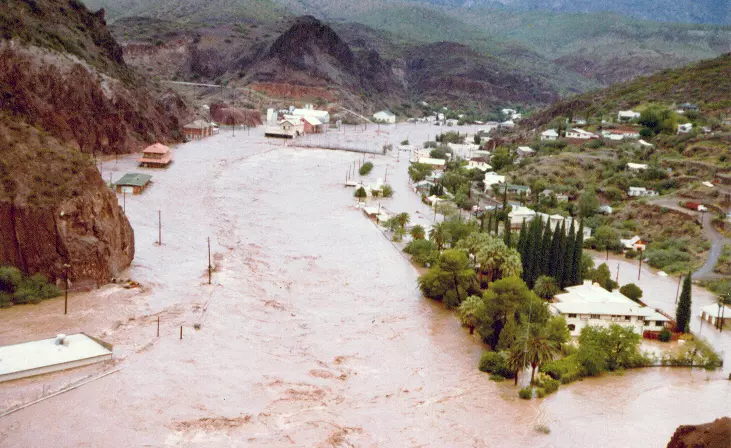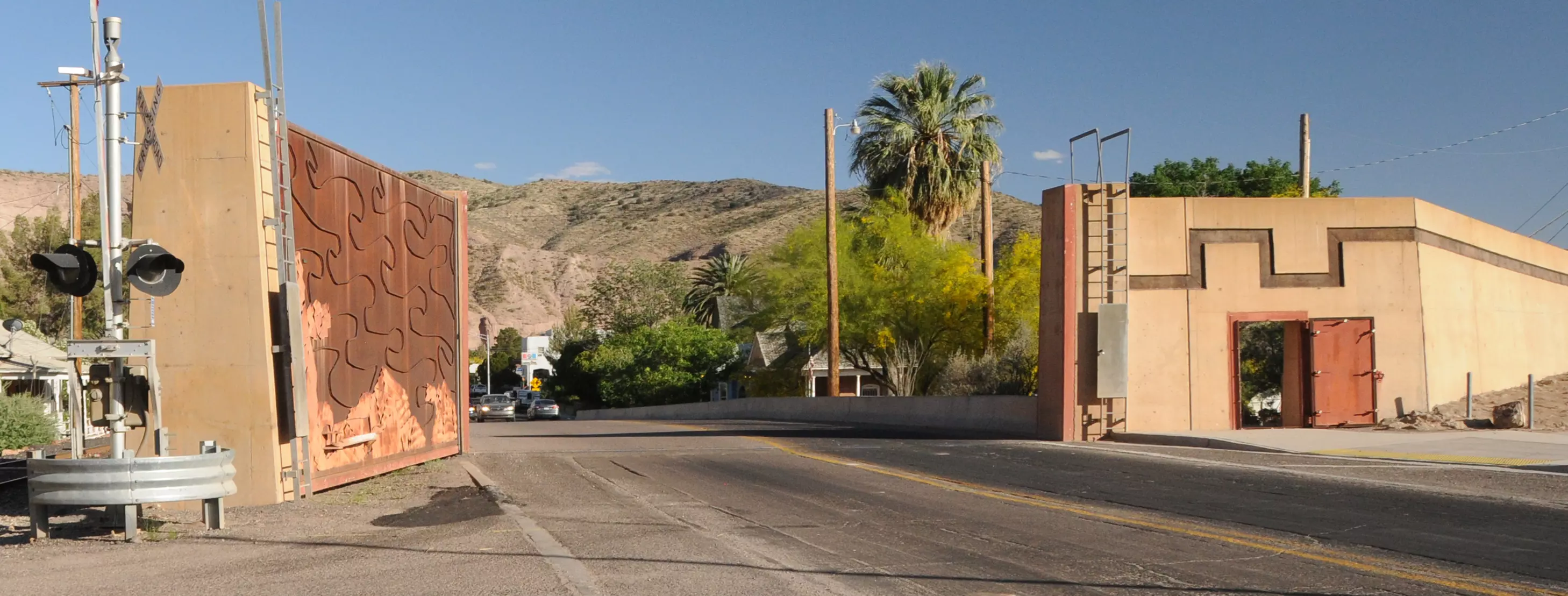Visitors to Clifton can't help but wonder about the huge metal gate on the south end of town, where the Coronado Bridge spans the San Francisco River. Locals jokingly refer to them as the "Jurassic Park" gates, referencing the huge walls designed to keep dinosaurs enclosed in a park. The gates were built in the early 1990s to protect South Clifton from flooding. A 20-foot high, half-mile-long levee, also built in the early 1890s, extends from the gates to the end of occupied parts of South Clifton. The levee is topped with a graveled path that many locals use for walking exercise. The floodgates were last closed, for other than a drill, when near-flooding occurred in September, 2013.
The flood of 1891 washed away many buildings and moved the railroad track, twisting the rails so that no trains could run for several days. It also swept away the Wells Fargo Building, including a safe where many people stored their cash and other valuables.
The flood, as usual, had deposited many feet of silt in places while taking it away in other places. It was thought that the safe which had many thousands of dollars worth of valuables in it was buried in this silt. For some time afterward people of Clifton spent much time and effort hunting treasure.
The flood of 1903 was one of the worst, coinciding with a prolonged strike.
During the afternoon of June 9th ominous clouds gathered in the sky and rain began to fall. Telephone messages came from Morenci warning the people to be ready for floods, for it was raining more at Morenci than Clifton. J. A. McWilliams was delivering groceries at the upper end of Chase Creek when he looked up the canyon and saw a wall of water eight feet high coming. The dam used by the Arizona Copper Company to impound their tailing had broken. McWilliams raced back down Chase Creek, shouting to people to save themselves. Almost no one heeded him. The water struck the flimsy walled houses which were almost in the creek. They crumpled like matchwood. At the same time the storm broke in Clifton. Rain came down in sheets and hailstones as large as walnuts peppered the people as they sought shelter. The storm was over in an hour but it took months to repair the damages. Thirteen bodies were found and it was known that several other people had been drowned.
The greatest flood in Clifton's history occurred December 4, 1906. It had rained for thirty hours straight. Once again a tailings dam broke and cascaded down Chase Creek. Chase Creek Street was a near total loss and 18 people were known to have lost their lives. The flood damage in this case was so great that there was talk of abandoning the town. It was after this flood that the Arizona Copper Company constructed the infamous wall along Chase Creek, built of chunks of slag and mortared together to form a flood wall 16 inches deep.

Flood of 1983
In October, 1983, Tropical Storm Octave, considered to be the worst tropical cyclone in the history of Arizona, dropped a foot of rain on the mountains of southern Arizona. Heavy rains caused many streams to burst their banks, including the San Francisco River. Over 700 homes were destroyed, and 86 of the town's 126 business were heavily damaged and most of Clifton's 4,200 residents had to be evacuated due to flooding. The Gila River near Clifton sustained its largest discharge rates since Clifton was founded. Along the Southern Francisco River, a peak discharge rate of 56,000 cu ft was reported by meteorologists, which is 1.8 times greater than the previous record.
